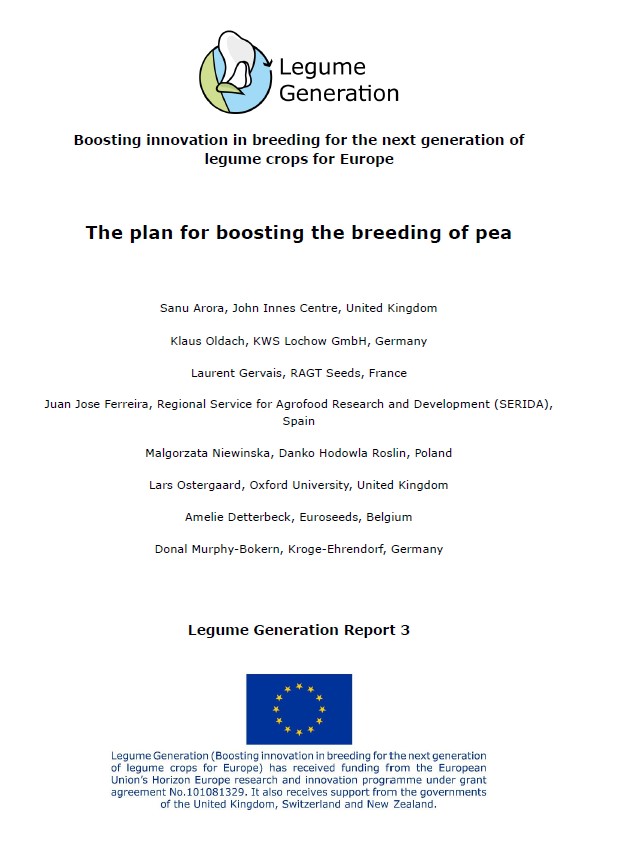Legume Generation Report 3
Sanu Arora, Klaus Oldach, Laurent Gervais, Juan Jose Ferreira, Malgorzata Niewinska, Lars Ostergaard, Amelie Detterbeck and Donal Murphy-Bokern
The purpose of Legume Generation is to boost the breeding of key legume species for European farmers. It is structured into six species-oriented innovation communities (ICs) and each link practical breeding with the supporting research-base in a transdisciplinary platform. This operational framework enables each of the six ICs to harness the relevant science base while focusing on individual species/species groups with coherence and synergies across the project. All six ICs innovate up to the point where newly-bred germplasm and tools are demonstrated at technology readiness level 7. This report presents the plan for boosting the breeding of pea within the Pea Innovation Community.
The Pea Innovation Community (PIC) is developed within the Legume Generation with a goal to harness research-based knowledge to boost the breeding of peas. The community brings together experts with a focus on pea improvement through innovation in genomic tools, integration of high-throughput phenotyping and data analytics by tapping into diverse genetic resources to introduce novel alleles into the breeding pipeline. Direct participation of private and public breeders will ensure that novel tools and novel genetics will be used and introgressed in active breeding programmes, thereby tackling long-standing challenges to pea cultivation such as the phenomenon of soil fatigue that prevents pea being grown on the same land more often than once in 7-8 years. The community will also engage with the UK legume research network, Defra Pulse Crop Genetic Improvement Network (PCGIN), to widen its network-base and access wider resources. The community is further supported by the scientists from 12 partner organisations within Legume Generation with four full breeding programmes supported by KWS, RAGT, SERIDA and DANKO.

